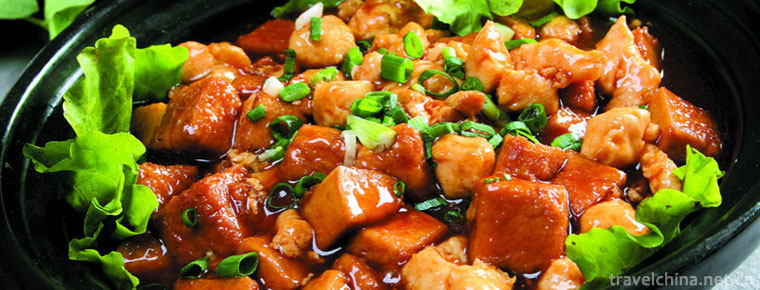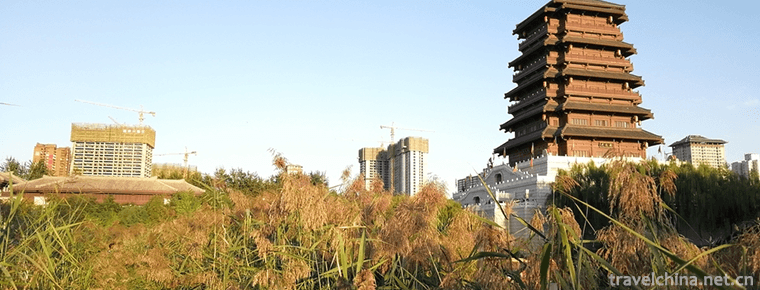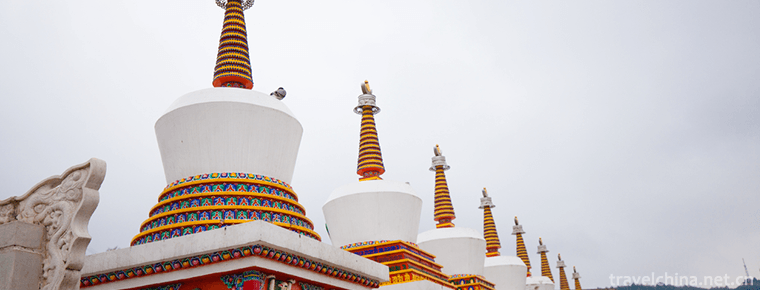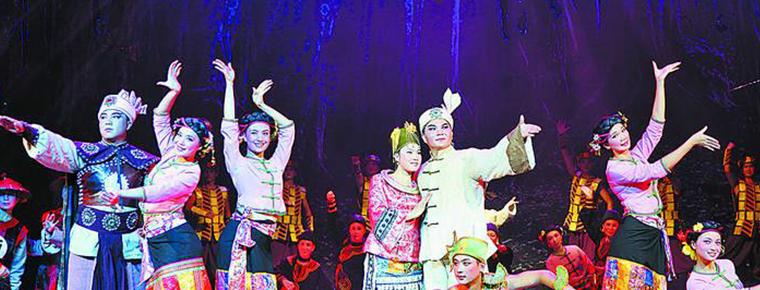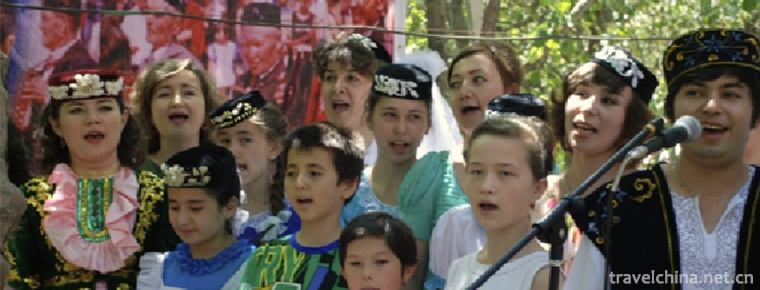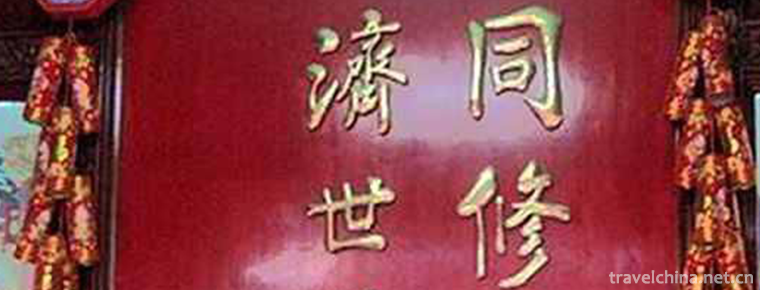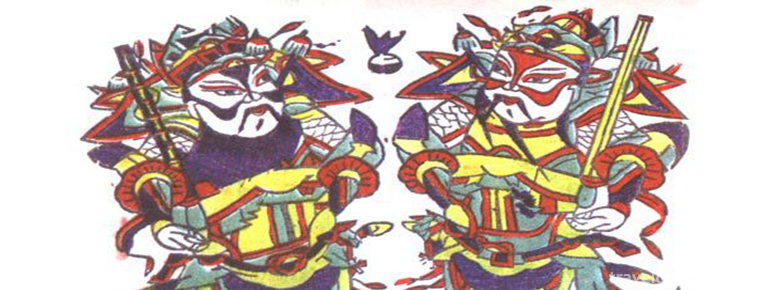Brown Fan Dance
Brown Fan Dance
On the day of the grand Brown fan dance festival, adult men gather in groups on a square with their own delicacies and rice wine every day, and hold a large-scale Brown fan dance activities by arranging long banquets of wine and vegetables along the square.
"Brown Fan Dance" is a dance of Hani people, an ancient and magical dance. The Hauni people celebrate the Spring Festival with the Han people. Every year, from the third to the fifth day of the first lunar month, a grand Brown fan dance ceremony is held. The Hauni people celebrate the Spring Festival with the Han people. Every year, from the third to the fifth day of the first lunar month, a grand Brown fan dance ceremony is held.
On May 23, 2011, the brown fan dance was listed in the third batch of national intangible cultural heritage list with the approval of the State Council.
Historical Evolution
According to folklore, in ancient times, a grandmother named "Omarto" wanted to teach the brown fan dance to women, but not all of them were taught before they went to heaven. Her crutches stuck in the village and grew into towering trees. In order to commemorate their ancestors, every year on the day of cattle or tigers in February of the lunar calendar, women in the village go to the "divine tree" to mourn their ancestors and dance the "brown fan dance". In addition, the origin of the brown fan dance is closely related to the ancient hunting collection and sacrifice.
Stylistic features
The Brown fan dance was mainly used for sacrificial activities at first. The dancing gestures were not unified, but each movement was symbolic. Males imitated animals or birds, while females carried Brown fans to imitate white Oriole movements. They danced separately to show respect and remembrance for the deceased. It was solemn and sincere. With the development of society, the palm fan dance gradually weakens the sacrificial elements and develops into a dance that can be used not only in sacrificial rites but also in self-entertainment activities, not only singing and dancing in sacrificial rites and funerals, but also in festivals and agricultural leisure.
Palm Fan Dance is accompanied by cuffs, drums, cymbals and suonas. The props consist of a pair of bamboo tubes with millet, baogu, buckwheat, silver chain and copper coins and several pine branches, which are placed on the bamboo mat. The Brown fan is a special prop for women. Dance has a certain skill, simple, heavy, funny movements, more use of foot tremor, undulating open span and the swing of arms and arms, part of the dance posture is similar to rock painting. There are more than 10 sets of movements, such as "wash the face of the old bear", "hold the melon by the monkey", "hold the chicken by the eagle", "wear pants by the old bear", "wrap the waist by the monkey", "fight the cock", "break the valley by the monkey", "flap the wings by the eagle", "walk by the old bear". They are vivid in shape, graceful in dancing posture, distinctive in national characteristics and full-bodied. Local flavor.
Brown Fan Dance is limited to males, presided over by highly respected elderly people. He held a brown fan in his hand and closed it three times to all the villagers. Then he spread out the fan to indicate that the Grand Palm fan dance ceremony is now beginning. For a moment, the sounds of gongs and drums shocked the whole world. In the joyous music, the elders who presided over the ceremony first danced around the banquet. Most of the actions were to shake their hands, which meant to jump off the dust and diseases on their bodies and usher in the good fortune and happiness of the new year. Then, the other people who attended the banquet, holding brown fans, danced around the banquet one or more people in turn. At the climax, the crowd danced. In Honey's mind, the white oriole, butterfly and bee are mascots, and the turtle dove is a bird of iniquity. Therefore, they are good at using mascots to symbolize the pursuit of beauty, and the act of driving away evil things to symbolize hatred for them. People sometimes spread their wings like white orioles, symbolizing abandonment of dirt and greeting the new; sometimes like white Orioles drinking spring water, symbolizing that the life of the new year will be as sweet as spring water; sometimes like butterflies gathering flowers, honey gathering, symbolizing the pursuit of a better life; sometimes like scaring turtledoves, symbolizing driving away farmland disasters and striving for a new one. A bumper harvest was achieved in 2001. The unique and graceful dance reflects the desire of the Honey people to get rid of the filth and welcome the table, and also reflects their virtues of being kind and enterprising.
After a burst of dancing, some people sat down along the long table, eating and drinking while singing, toasting each other, and congratulating Kangtai and auspicious each other with singing. Some continue to dance, indulging in the joy of dance. The melodious singing, the simple and colorful Brown fan dance, the happy laughter and joy of drinking make the whole feast full of joy, make people full of happiness and good hope in the new year, make the Honey people more united and harmonious, to overcome all natural disasters, usher in the new year's bumper grain, six livestock prosperity.
Inheritance Significance
People regard it as the incarnation of their ancestors. Every February of the lunar calendar belongs to the day of ox or tiger. All the women in the village go to the "divine tree" to mourn their ancestors and dance the "brown fan dance". The first ancestor of Li Hei, a villager in Malizhai, Yuanyang County, was "Oma" (Tiannu). From "Oma" down to the widely recognized male ancestor of the Hani people, "Zhanmoye", more than 20 generations apart. The Hani people in the Red River regard "Oma" and "God Tree" as God worship together. When offering sacrifices, the women waved a ring of brown fans and started dancing. From the form and content of the whole dance, it shows that the brown fan dance has a long history.
The main inheritance mode of brown fan dance is teacher's inheritance. The master teaches the main movements and basic techniques of dance to the apprentices. As one of the representative works of Hani dance, Brown fan dance has won many awards in China, and has performed in Sweden, Italy and other countries.


-
Kung Pao Chicken
Kung pao chicken is a famous traditional Chinese and western famous dish.
Views: 227 Time 2018-10-12 -
Detian waterfall
Detian Waterfall is located in Detian Village, Shuolong Town, Daxin County, Chongzuo City, Guangxi Zhuang Autonomous Region. It is located in the upper reaches of Guichun River on the border between C.
Views: 150 Time 2018-12-12 -
Seoul Lake Park
Seoul Lake Park is located in Weiyang District of Xi'an City, Shaanxi Province. It is 200 meters west of the cross of Fengcheng 4th Road and Zhuhong Road. It was originally the Unity Reservoir .
Views: 124 Time 2019-01-13 -
Jilin Beidahu Skiing Ground
Jilin Beidahu Skiing Ground is located in Jilin Beidahu Development Zone, 53 kilometers away from Jilin urban area. Entering the ski resort, facing the Asian Games Village Hotel..
Views: 139 Time 2019-01-19 -
Tar Temple Scenic Area
Tar Temple, also known as Taer Temple, was founded in the 10th year of Hongwu Ming Dynasty (1377). Named after the Great Silver Pagoda built in memory of Zongkaba.
Views: 153 Time 2019-02-13 -
Dai opera
Dai Opera, one of the national intangible cultural heritage, is a traditional drama in Jingpo Autonomous Prefecture of Dai Nationality in Dehong, Yunnan Province..
Views: 84 Time 2019-04-23 -
Linxia brick carving
Linxia brick carving (also known as Hezhou brick carving) is a practical art closely combined with buildings. Linxia brick carving matured in the Ming and Qing dynasties, and in modern times it absorb.
Views: 114 Time 2019-05-13 -
Saban Festival of the Tatar Nationality
The Saban Festival (also known as Ploughshare Festival) of the Tatar Nationality is a unique traditional festival of the Tatar Nationality. Every year, after the spring sowing of all the farmers in th.
Views: 169 Time 2019-06-18 -
Tongrentang Traditional Chinese Medicine Culture
Tongrentang Traditional Chinese Medicine Culture, one of the traditional Chinese medicine, is declared by Beijing Tongrentang (Group) Co., Ltd., one of the national intangible cultural heritage..
Views: 190 Time 2019-06-21 -
Zhuxian Town Wood Print New Year Picture
Zhuxianzhen Wood Engraving New Year Picture is one of the ancient Chinese traditional crafts. As the originator of Chinese woodcut New Year pictures, is mainly distributed in Kaifeng, Zhuxian Town and.
Views: 134 Time 2019-08-10 -
Social undertakings in Guangyuan
By the end of 2017, there were 751 schools at all levels and types in Guangyuan City (excluding primary and primary school teaching sites), with 380700 students and 26800 full-time teachers. Among them, there are 3 universities with 21500 students and.
Views: 312 Time 2020-12-15 -
Meishan peoples life
In 2019, the per capita disposable income of urban residents is 36743 yuan, an increase of 9.0%. The per capita consumption expenditure of urban residents was 23554 yuan, an increase of 12.0%; the per capita disposable income of rural residents was 18177.
Views: 341 Time 2020-12-18
